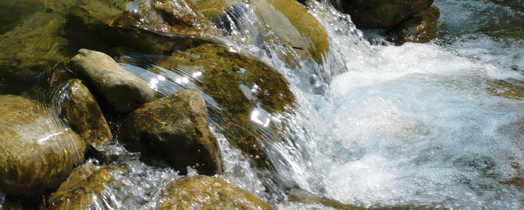The annual average of Germany’s rainfall is enough to replenish its ground and surface water thus covering the country’s water requirements but direct uses are still uncommon. Rainwater can, however, become a problem, especially in connection with torrential rains or flood control. Storage technologies for specific purposes are still a thing of the future although some countries do have so-called “rainwater retention basins” to store rainwater for discharge into surface waters as wastewater.
Rainwater is already being used in private households for many purposes where drinking water quality is not required e.g. watering gardens or flushing toilets. Rainwater even has substantial advantages over ground or surface water for many uses as it is only slightly contaminated and does not contain carbonates or other minerals.
It makes good sense to catch and re-use rainwater even in regions with sufficient water supplies. Rainwater works just as well as drinking water e.g. for airconditioning buildings, for use in automated firefighting systems with high-pressure fumigation and for operating washing machines.
Rainwater can be retained and mixed with drinking water for softening using adapted reservoir technologies with relevant filtration and treatment technologies.
It is easy to turn rainwater into drinking water and this is already a favorite method for obtaining water in many regions. Drinking water contains natural components which not only make it safe for consumption but are also important for human nutrition e.g. calcium, magnesium, sodium, potassium, hydrocarbonate, sulfate and chloride. These must be added to rainwater as salts before it can be used as drinking water. The same holds true for water generated from atmospheric humidity.
 Fraunhofer Water Systems Alliance (SysWasser)
Fraunhofer Water Systems Alliance (SysWasser)